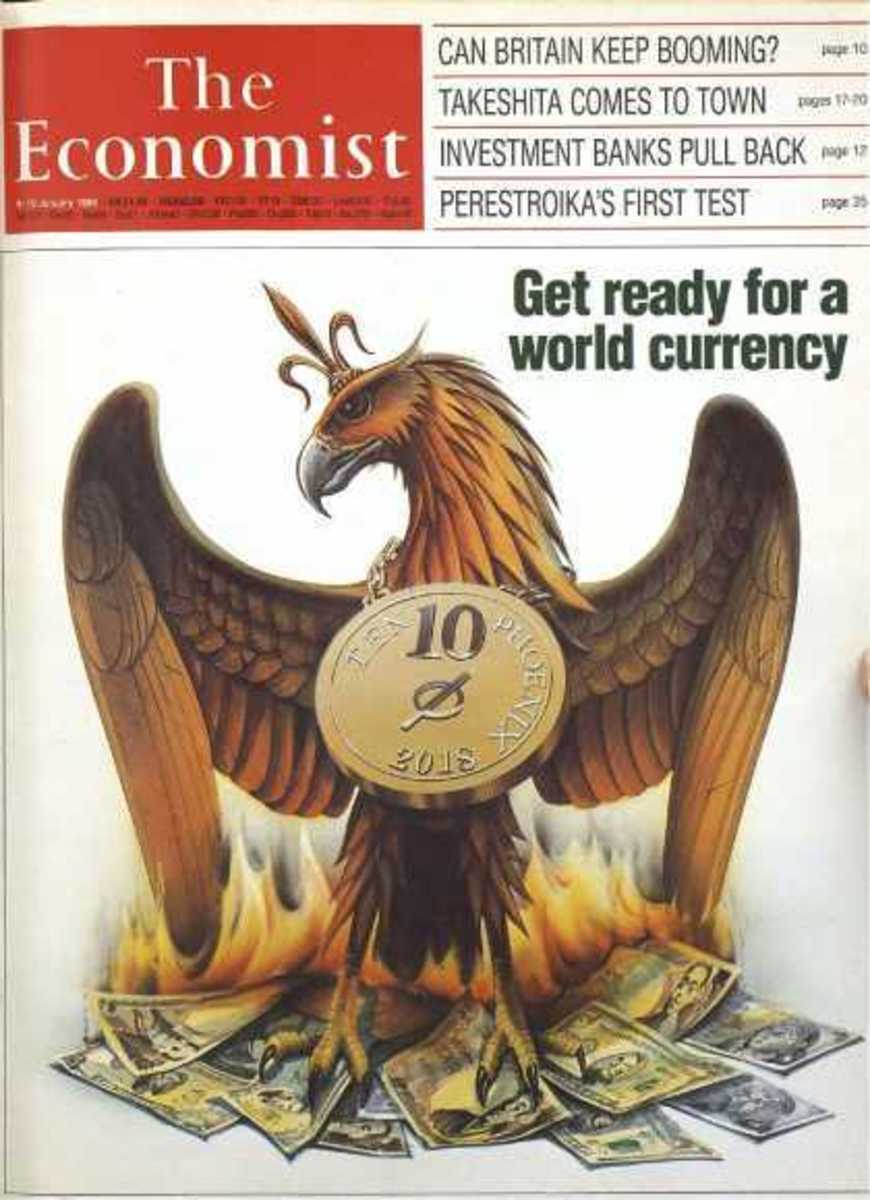Rothschild Controlled Media Outlet — “Get Ready for a World Currency by 2018”
The Economist magazine published an article almost thirty years ago, discussing the prospect of a world currency that should be expected around the year 2018. The 1988 article foreshadows a methodical movement towards a centralized world currency that we have, in many ways, seen play out over the past few decades.
One must also keep in mind that the controlling interest of The Economist is held by the powerful Rothschild family, who regard themselves as the “custodians of The Economist magazine’s legacy.” In essence, the magazine operates as a quasi-propaganda arm for the Rothschild banking empire and related businesses and, is in many ways, meant to prime the pump of public opinion for the globalist agenda to be implemented.
The excerpt below appeared in the print magazine on January 9, 1988, in Vol. 306, pp 9-10.
Ready for the Phoenix
THIRTY years from now, Americans, Japanese, Europeans, and people in many other rich countries, and some relatively poor ones will probably be paying for their shopping with the same currency. Prices will be quoted not in dollars, yen or D-marks but in, let’s say, the phoenix. The phoenix will be favoured by companies and shoppers because it will be more convenient than today’s national currencies, which by then will seem a quaint cause of much disruption to economic life in the last twentieth century.
–
At the beginning of 1988 this appears an outlandish prediction. Proposals for eventual monetary union proliferated five and ten years ago, but they hardly envisaged the setbacks of 1987. The governments of the big economies tried to move an inch or two towards a more managed system of exchange rates – a logical preliminary, it might seem, to radical monetary reform. For lack of co-operation in their underlying economic policies they bungled it horribly, and provoked the rise in interest rates that brought on the stock market crash of October. These events have chastened exchange-rate reformers. The market crash taught them that the pretence of policy co-operation can be worse than nothing, and that until real co-operation is feasible (i.e., until governments surrender some economic sovereignty) further attempts to peg currencies will flounder.
…
The New World Economy
The biggest change in the world economy since the early 1970’s is that flows of money have replaced trade in goods as the force that drives exchange rates. as a result of the relentless integration of the world’s financial markets, differences in national economic policies can disturb interest rates (or expectations of future interest rates) only slightly, yet still call forth huge transfers of financial assets from one country to another. These transfers swamp the flow of trade revenues in their effect on the demand and supply for different currencies, and hence in their effect on exchange rates. As telecommunications technology continues to advance, these transactions will be cheaper and faster still. With unco-ordinated economic policies, currencies can get only more volatile.
…




